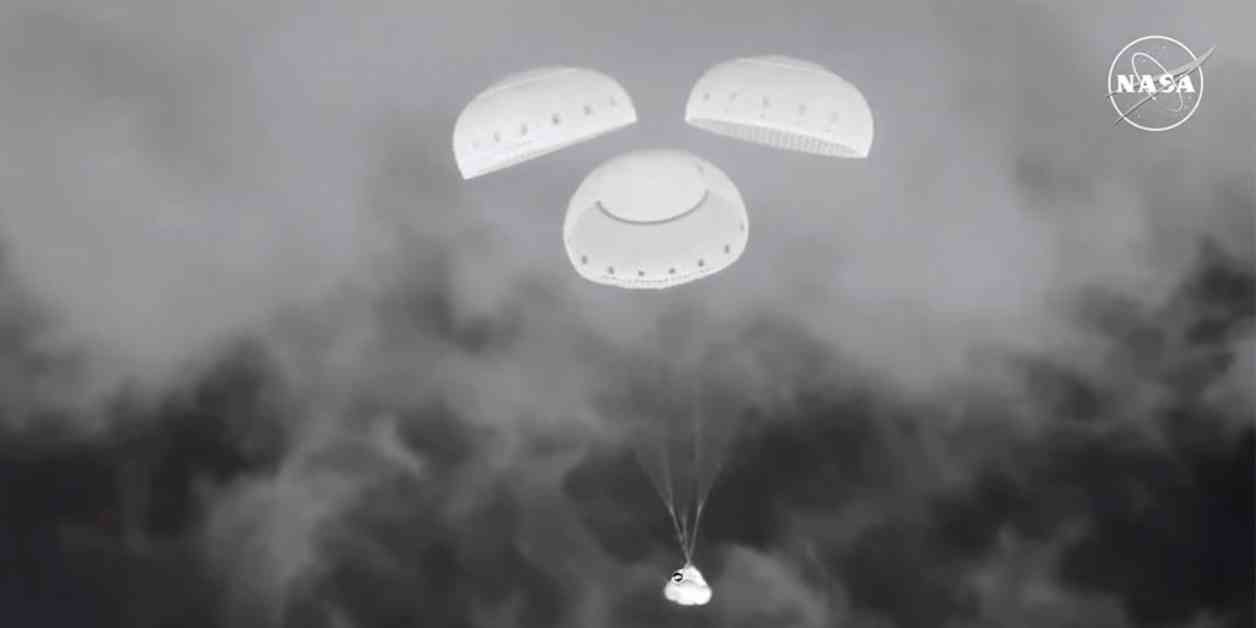Boeing’s Starliner spacecraft successfully returned to Earth early Saturday morning, landing at the White Sands Missile Range in New Mexico. The test flight was conducted without a crew onboard, with two test pilots remaining in space until next year due to concerns over the safety of their return. The spacecraft parachuted down six hours after departing from the International Space Station, marking a significant milestone in Boeing’s journey towards crewed missions to the space station.
Safe Return to Earth
Ken Bowersox, associate administrator of Space Operations Mission Directorate at NASA Headquarters, expressed pride in the successful return of the Starliner spacecraft. Despite the need to bring the spacecraft back uncrewed, NASA and Boeing gained valuable insights into Starliner’s performance in the challenging space environment. The collaboration between the two entities will continue as they work towards certifying Starliner for crew rotation missions to the space station.
The return of the Starliner capsule follows a series of setbacks and delays in its crew debut mission. The spacecraft faced thruster failures and helium leaks during its June launch, leading to the decision to keep the test pilots in space until the issues were resolved. Boeing conducted extensive testing to ensure the safety of bringing the crew home, but NASA ultimately decided to have SpaceX handle their return.
Challenges and Setbacks
Boeing’s Starliner spacecraft encountered multiple challenges during its mission, including thruster issues and helium leaks. The spacecraft’s propulsion system experienced helium leaks even before launch, with additional leaks discovered after liftoff. Five thrusters failed during the mission, raising concerns about the spacecraft’s ability to safely descend from orbit.
NASA and Boeing worked together to address the technical issues plaguing the spacecraft, conducting thruster tests in space and on the ground to ensure its safe return. Despite the efforts to rectify the problems, NASA opted to have SpaceX fly the test pilots back to Earth, highlighting the importance of safety in crewed space missions.
Lessons Learned and Future Plans
The Starliner mission provided valuable learning experiences for NASA and Boeing, paving the way for future crewed missions on the spacecraft. The collaboration between the two entities will continue as they analyze the data from the test flight and plan for the next steps in the program.
Boeing’s Commercial Crew Program manager, Mark Nappi, commended the Starliner teams for their efforts in ensuring a successful undocking, deorbit, re-entry, and landing. The data gathered from the mission will be reviewed to determine the next steps for the program, as NASA aims to have two U.S. companies transporting astronauts into space.
NASA’s Commercial Crew Program manager, Steve Stich, emphasized the importance of having multiple options for crew transportation to the space station. The agency looks forward to continued collaboration with SpaceX and Boeing as they work towards ensuring the safety and success of future crewed missions.
In conclusion, the safe return of Boeing’s Starliner spacecraft marks a significant milestone in the journey towards crewed missions to the International Space Station. The lessons learned from the mission will inform future endeavors in space exploration, highlighting the importance of collaboration and innovation in advancing human spaceflight.




